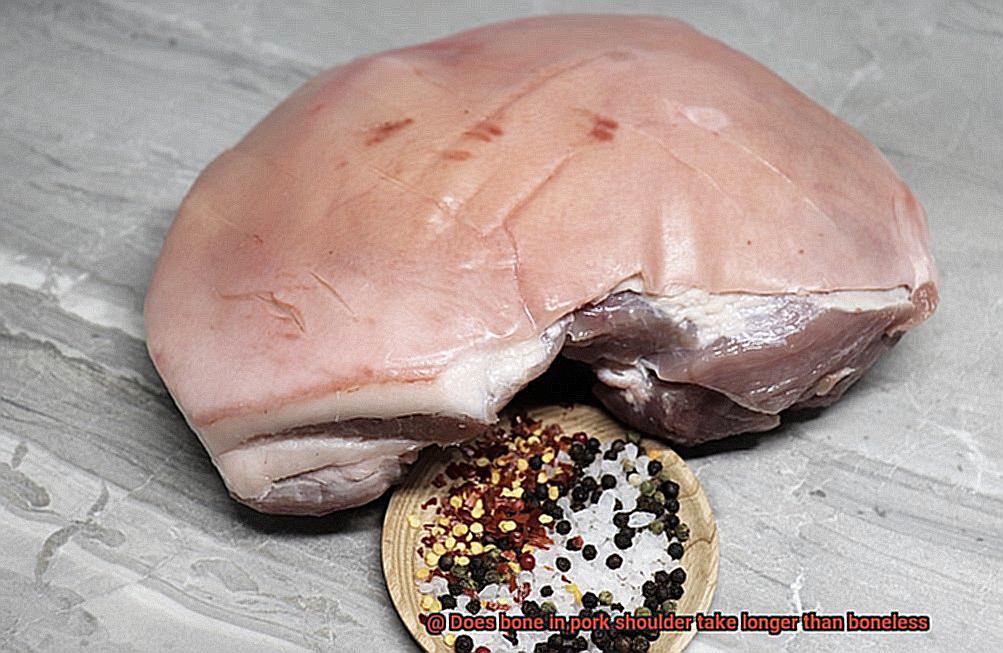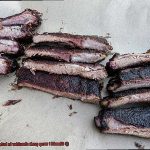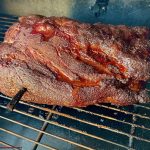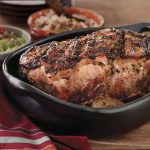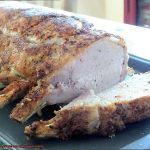Are you ready to impress your guests with a succulent pork shoulder at your next gathering? Pork shoulder is a versatile and crowd-pleasing cut of meat that can be cooked in various ways. But, have you ever wondered if using bone-in or boneless pork shoulder affects the cooking time? Rumors abound that bone-in pork takes longer to cook, but is this really true?
Cooking a perfect pork shoulder requires patience and precision. The cut of meat and cooking method used can make all the difference in the final result. One major difference between bone-in and boneless pork shoulder is the cooking time required. But why does the presence of the bone affect it?
In this blog post, we’ll delve into this question and debunk any myths surrounding pork shoulder cooking times. We will explore the science behind bone-in vs. boneless cooking, compare their advantages and disadvantages, discuss different cooking techniques, and teach you how to tell when your pork shoulder is perfectly cooked. Whether you’re an experienced cook or just curious about food, we’ve got you covered. So sit back, relax, and get ready to learn everything you need to know about cooking the perfect pork shoulder.
Contents
What Is Bone-In Pork Shoulder?
This cut of meat is taken from the upper part of the pig’s front leg and is also known as pork butt or Boston butt. What sets it apart from its boneless counterpart is the presence of a bone that runs through the center of the meat, adding depth to its flavor and helping to keep it moist during cooking.
However, cooking a bone-in pork shoulder requires more time than boneless cuts due to its thickness and the presence of a bone. This is because the bone acts as an insulator, slowing down the transfer of heat through the meat, which means it takes longer to cook. Additionally, the bone-in pork shoulder has more connective tissue that needs to be broken down during cooking, which takes additional time.
But don’t let this discourage you from trying out this delicious cut of meat. Many people prefer using bone-in pork shoulder because it often results in a more flavorful and moist final product. The bone adds depth to the flavor of the meat and helps to keep it tender by distributing heat evenly throughout the cut.
If you’re planning to cook a bone-in pork shoulder, be sure to adjust your cooking time accordingly. In general, bone-in pork shoulder takes about 25% longer to cook than boneless.
For example, if a boneless pork shoulder takes 3 hours to cook at 325 degrees Fahrenheit, a bone-in pork shoulder of similar size will take approximately 3 hours and 45 minutes.
This difference in cooking time may not seem significant, but it can affect the final outcome of your dish.
Cooking Time Differences
Let me guide you through the cooking time differences between bone-in and boneless pork shoulder, so you can make an informed decision.
Did you know that bone-in pork shoulder takes longer to cook than boneless pork shoulder? This is because bones act as insulators, slowing the cooking process. The bone in pork shoulder is dense and large, requiring extra time for heat to penetrate and cook the meat around it. As a result, bone-in pork shoulder can take up to 30% longer to cook than boneless varieties.
But don’t be intimidated by the cooking time difference. Cooking times vary depending on factors such as size, thickness, cooking method, and desired level of doneness. As a general rule of thumb, bone-in pork shoulder can take anywhere from 30 minutes to 2 hours longer to cook than boneless pork shoulder.
It is important to note that cooking times should always be adjusted based on internal temperature rather than relying solely on time. To ensure the pork shoulder is safe for consumption, use a meat thermometer to measure the internal temperature of at least 145°F (63°C).
If you have ample time and are seeking a more flavorful and tender final product, then bone-in pork shoulder may be your best bet. However, if you are in a hurry or prefer a quicker cooking process, then go for boneless pork shoulder. Ultimately, the decision between bone-in or boneless will depend on personal preference and cooking needs.
What is the Difference Between Bone-In and Boneless?
The primary difference between these two cuts of meat is the presence or absence of the bone. Bone-in pork shoulder contains the bone, while boneless pork shoulder has had the bone removed.
Cooking bone-in pork shoulder can take longer due to bones being poor conductors of heat. The heat takes longer to reach the center of the meat where the bone is located, and the bone itself can act as a barrier to heat penetration, resulting in longer cooking times. Conversely, boneless cuts of pork shoulder cook more quickly because there is no bone to slow down the cooking process, allowing heat to easily penetrate throughout the meat.
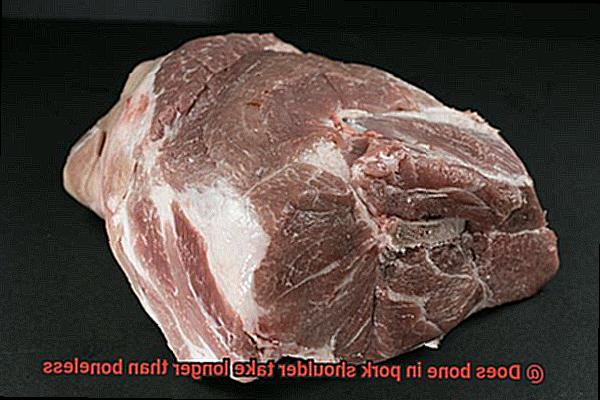
However, it’s important to note that cooking time can vary based on factors such as size and thickness of the cut, cooking method, and desired level of doneness. Generally speaking, though, bone-in pork shoulder will take longer to cook than boneless pork shoulder due to the presence of the bone.
When it comes to flavor, some argue that bone-in cuts have a richer taste due to bones imparting more flavor into the meat. However, this is largely a matter of personal preference. Both bone-in and boneless cuts of pork shoulder can be seasoned or marinated for added flavor.
Ultimately, your choice between bone-in or boneless pork shoulder depends on your personal preferences and cooking needs. If you have ample time for a longer cooking process and prefer richer flavor, then bone-in may be your top pick. However, if you’re short on time or prefer a quicker cooking process, then boneless may better suit your needs.
The Effect of Bones on Heat Conductivity
When it comes to pork shoulder, bone-in cuts take longer to cook due to bones being poor conductors of heat. However, did you know that the presence of bones can also affect the tenderness and flavor of the finished product?
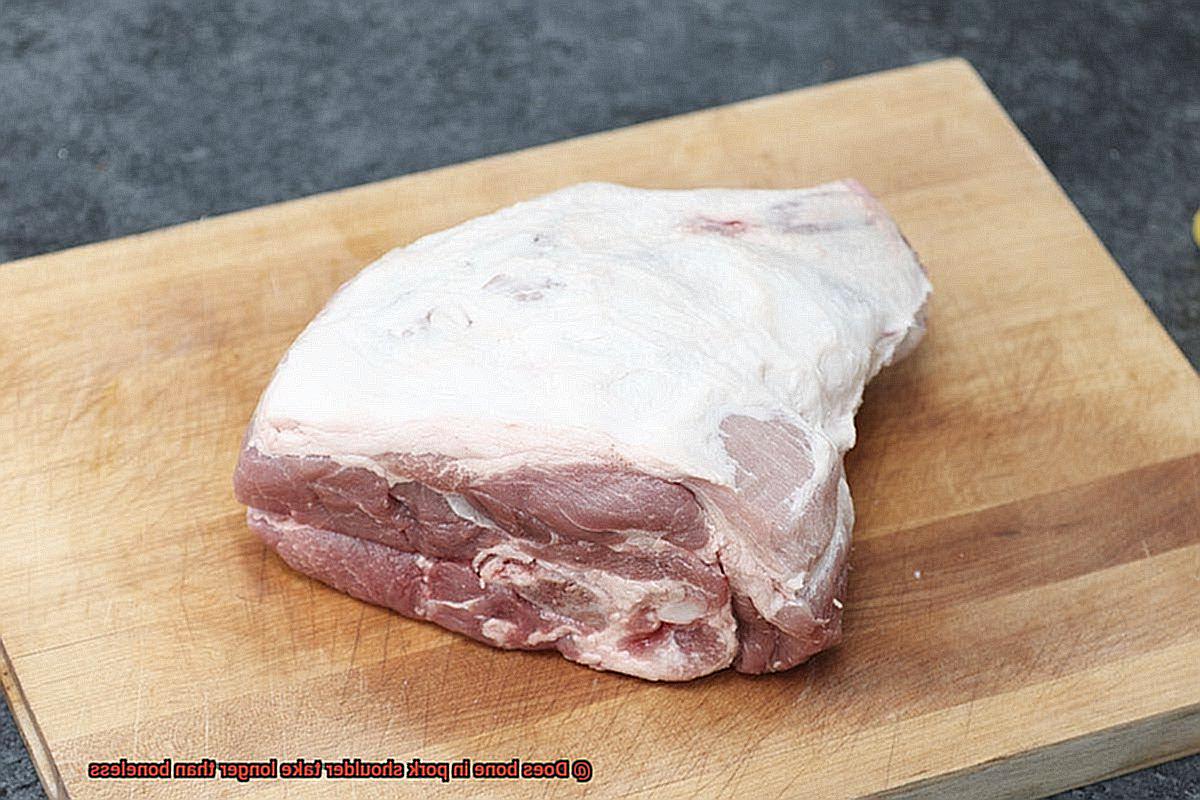
Let’s take a closer look at how bones can affect heat conductivity during cooking. Bones are dense and can absorb and retain heat differently than the surrounding meat. In some cases, like with pork shoulder, the bone can actually act as a conductor of heat and help to distribute it evenly throughout the meat. This results in a more tender and flavorful finished product.
However, if the bone-in pork shoulder is not cooked properly, it can also lead to uneven cooking with parts of the meat being overcooked or undercooked. Therefore, monitoring the internal temperature becomes crucial for ensuring that all parts of the meat have reached a safe temperature for consumption. Using a meat thermometer is an excellent way to ensure that you’re serving up perfectly cooked meat.
On the other hand, boneless pork shoulder may cook faster and more evenly since there are no bones to interfere with heat conductivity. But without bones to act as conductors of heat, the resulting meat may lack flavor or tenderness compared to its bone-in counterpart.
So, whether you prefer bone-in or boneless pork shoulder depends on personal preference and cooking needs. If you’re looking for a richer taste with more tenderness, go for bone-in cuts. But if you’re short on time and want faster cooking with less hassle, opt for boneless cuts.
How Does This Affect Cooking Time?
If you’re planning to cook pork shoulder, you might be wondering whether to choose bone-in or boneless. Many people believe that bone-in pork takes longer to cook than boneless pork, but this is not always the case.
The thickness of the meat is the main factor that affects cooking time. While bone-in pork shoulder can be thicker than boneless cuts, the bone can actually help distribute heat evenly throughout the meat and result in quicker cooking times. Meanwhile, boneless cuts can also vary in thickness and may not necessarily cook faster than bone-in pork.
So, what’s the best way to ensure that your pork shoulder is cooked to perfection? Use a meat thermometer. This will give you an accurate reading of the internal temperature, which should reach 145°F for medium-rare or 160°F for medium.
It’s also important to let the meat rest for at least 3-5 minutes before carving. This will help retain moisture and tenderness, ensuring a succulent and flavorful pork shoulder every time.
The Pros and Cons of Bone-In Pork Shoulder
Let’s start with the positives.
One major advantage is the extra flavor that comes with using bone-in pork shoulder. As the meat cooks, the bone adds moisture and taste, resulting in a more succulent and mouth-watering dish.
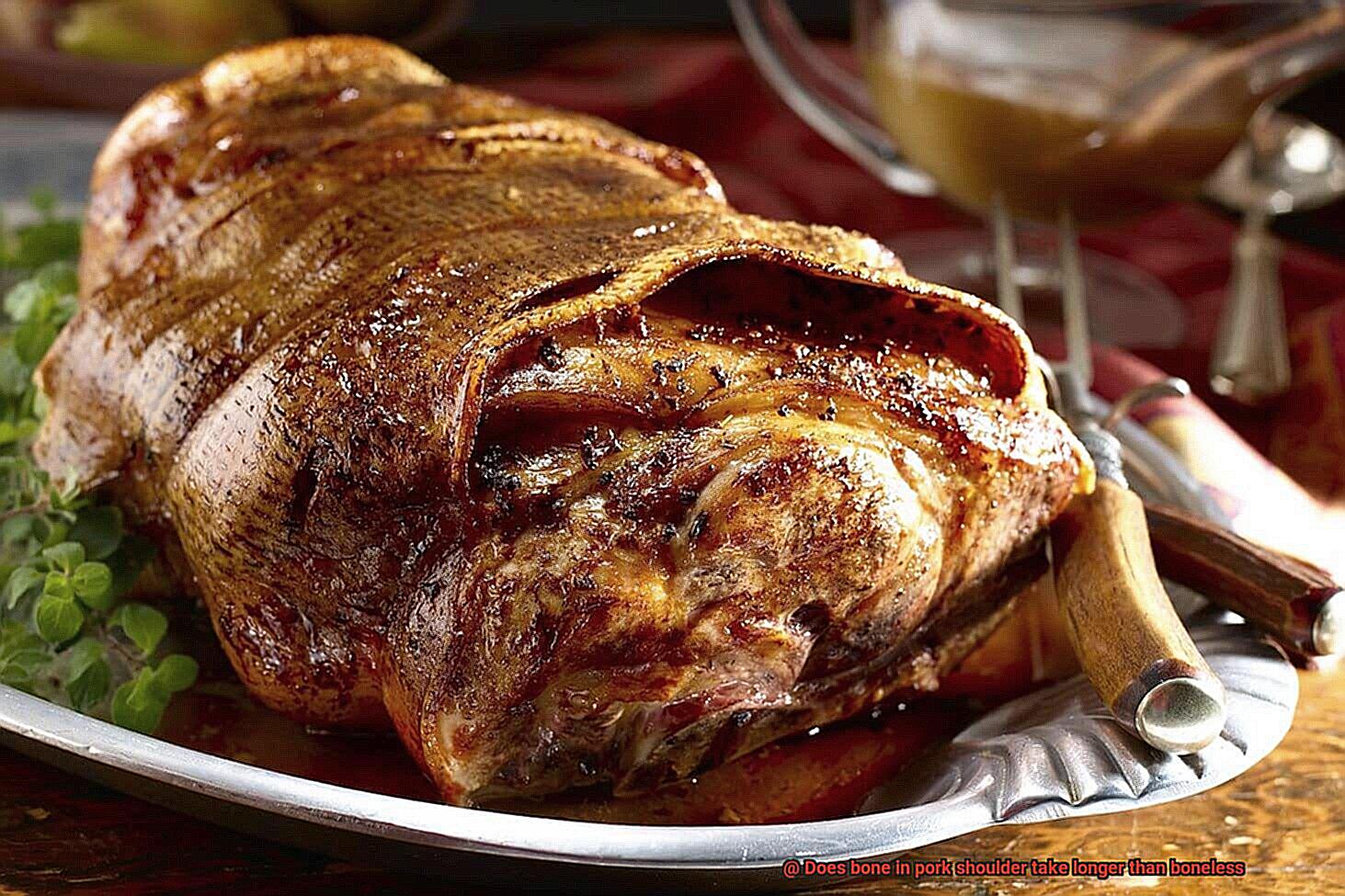
Plus, it’s often less expensive than its boneless counterpart, making it a budget-friendly option for those feeding a crowd. However, there are also some potential downsides to consider.
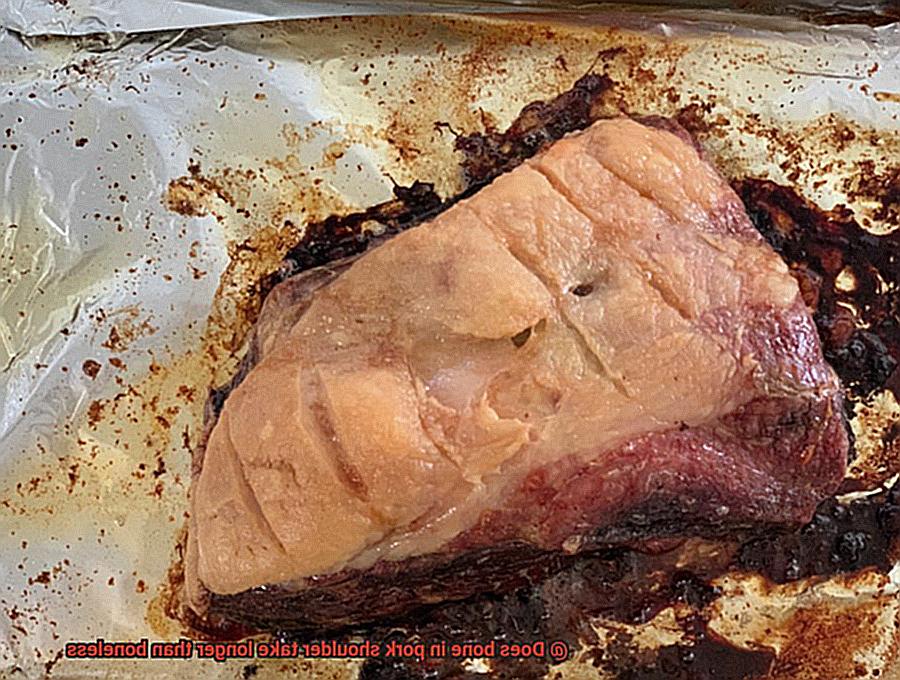
Many people worry that bone-in pork shoulder takes longer to cook than boneless, which can lead to uneven cooking and potentially undercooked areas. But don’t fret.
Simply add 10-15 minutes of cooking time per pound for bone-in meat compared to boneless, and you’ll have evenly cooked and thoroughly delicious pork shoulder.
Tips for Cooking Bone-In Pork Shoulder
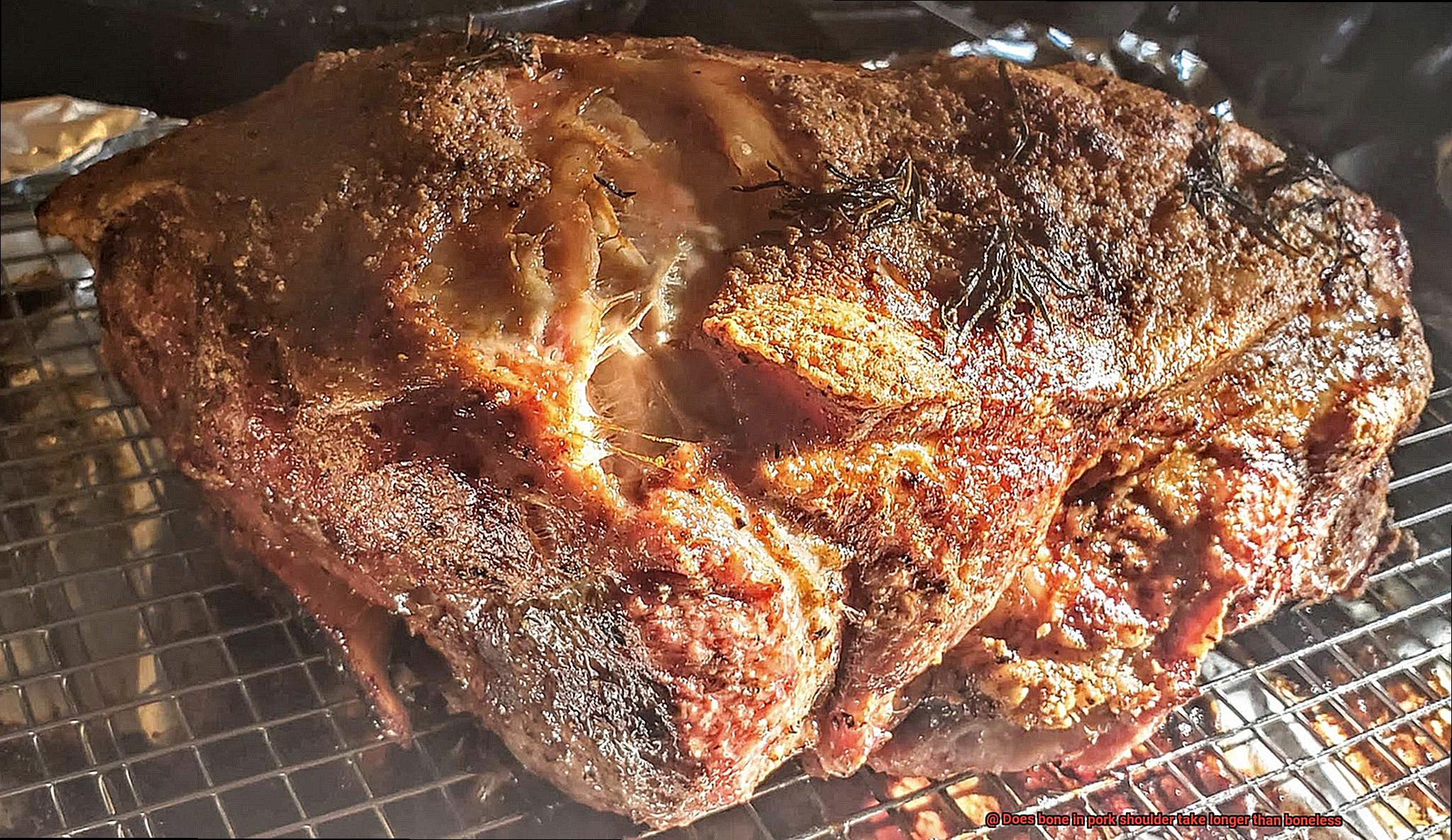
If you’re planning to cook a bone-in pork shoulder, there are a few tips that can help you achieve a tender and flavorful end result. Here are five tips that will help you cook up a delicious pork shoulder every time.
Plan for Longer Cooking Time
Bone-in pork shoulder takes longer to cook than boneless, so it’s important to adjust your cooking time accordingly. You should plan on cooking bone-in pork shoulder for at least 30 minutes per pound. Although this may seem like a long time, the end result will be worth the wait.
Bring the Meat to Room Temperature
Before cooking, be sure to take your bone-in pork shoulder out of the fridge and let it sit at room temperature for about an hour. This allows for more even cooking and prevents the meat from becoming tough.
Season Generously
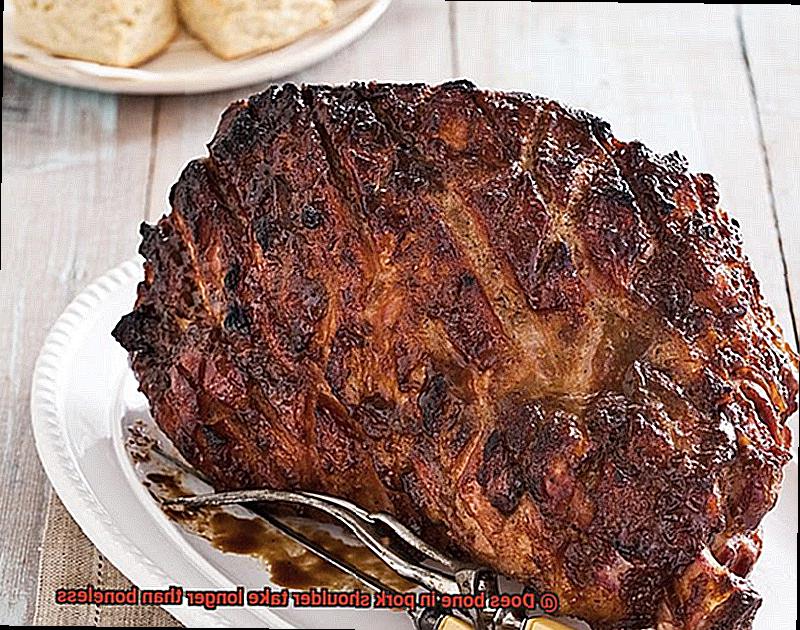
Seasoning is key when it comes to cooking pork shoulder. With the bone intact, seasoning can penetrate deeper into the meat, resulting in a more flavorful end product. Be sure to season generously with spices like garlic, salt, pepper, and herbs like rosemary or thyme.
Use a Low and Slow Cooking Method
For the best results, use a low and slow cooking method like braising or roasting. This allows the collagen in the meat to break down over time, resulting in tender and juicy meat. Cook your bone-in pork shoulder at a low temperature (around 250-275°F) for a longer period of time (6-8 hours).
Let it Rest
After cooking, be sure to let your bone-in pork shoulder rest for at least 15-20 minutes before slicing. This allows the juices to redistribute throughout the meat, resulting in a more flavorful and tender end product.
p-YiyiSufvc” >
Conclusion
To sum up, the age-old question of whether bone-in pork shoulder takes longer to cook than boneless has been thoroughly answered. As we’ve discovered, the presence of a bone and connective tissue in bone-in pork shoulder can extend cooking time, but it also adds complexity and richness to the flavor profile.
Of course, the exact cooking time will depend on several factors like size, thickness, cooking method, and desired level of doneness. But one thing is certain: a meat thermometer is a must to ensure that your pork shoulder reaches at least 145°F for safe consumption.
While boneless pork shoulder may cook more quickly and evenly, it may not have the same depth of flavor or tenderness as its bone-in counterpart. Ultimately, choosing between the two comes down to personal preference and cooking needs.
If you opt for a bone-in pork shoulder, take note: bring it to room temperature before cooking, season liberally with herbs and spices, use a low and slow cooking method such as braising or roasting, and let it rest before slicing into juicy goodness.
With these tips in mind, you’re well on your way to wowing your guests with a perfectly cooked pork shoulder at your next gathering.

